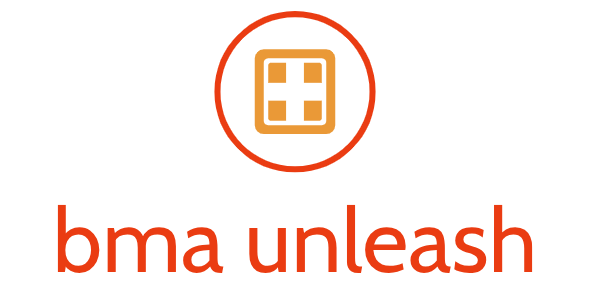
What is the PHAT Workout?
The PHAT workout, which stands for Power Hypertrophy Adaptive Training, is a unique approach to strength training designed to maximize both muscle growth (hypertrophy) and strength gains. Unlike traditional bodybuilding routines focusing solely on high reps or powerlifting programs emphasizing low reps, PHAT cleverly combines both for a synergistic effect. This means you’ll be performing a mix of high-rep sets for hypertrophy and low-rep sets for strength building, all within a single workout. The adaptive aspect comes into play as your body responds differently to each rep range, constantly challenging and stimulating muscle growth and strength development.
The PHAT Workout Structure: A Balanced Approach
PHAT’s cleverness lies in its structured approach. Each workout typically includes four sets per exercise, with the rep ranges varying strategically. You start with a power set of 1-5 reps, focusing on heavy weight and maximal strength. This set primes your nervous system and muscles for the following sets. Next comes a hypertrophy set of 8-12 reps, using a weight that allows you to reach muscular fatigue. This set emphasizes muscle growth through increased time under tension. The third set also focuses on hypertrophy, but with a slightly higher rep range of 15-20 reps, further pushing muscular endurance. Finally, a drop set (reducing weight and continuing until failure) finishes the exercise, ensuring complete muscle exhaustion. This four-set structure is repeated for each exercise within a workout.
Muscle Groups and Workout Split: Strategic Targeting
While the flexibility of PHAT allows for some customization, a common approach involves a four-day upper/lower split. This means you’ll train your upper body (chest, back, shoulders, arms) on two days and your lower body (quads, hamstrings, calves) on the two others. This split allows for adequate rest and recovery for each muscle group, crucial for optimal growth. You can adjust this split based on your individual needs and recovery capacity. Some people might opt for an upper/lower/push/pull split for even more focused muscle targeting.
Exercise Selection: Variety and Effectiveness
Exercise selection is key to a successful PHAT workout. You’ll want to choose compound exercises that work multiple muscle groups simultaneously. Examples include squats, deadlifts, bench presses, overhead presses, rows, and pull-ups. These exercises are the foundation of the PHAT program, laying the groundwork for significant strength and hypertrophy. Isolation exercises can be incorporated to target specific muscle groups after the compound movements, but they shouldn’t dominate the workout.
Progressive Overload: The Key to Continuous Gains
The principle of progressive overload is paramount to the success of any strength training program, and PHAT is no exception. This means consistently increasing the weight, reps, or sets over time. As you get stronger, you should gradually increase the weight you lift, aiming to push past your previous limits. You can also increase the number of reps or sets you perform, further challenging your muscles and promoting growth. Tracking your workouts is essential to ensure you’re consistently progressing and avoiding plateaus.
Rest and Recovery: Fueling Muscle Growth
Rest and recovery are just as important as the workout itself. Adequate sleep, proper nutrition, and hydration are crucial for muscle repair and growth. Aim for at least 7-9 hours of quality sleep per night. Your diet should be rich in protein to support muscle protein synthesis, and carbohydrates to provide energy for your workouts. Staying hydrated is also essential for optimal muscle function and recovery. Don’t underestimate the importance of rest days; they allow your body to recover and rebuild.
Listen to Your Body: Individualization and Adjustment
While PHAT provides a structured framework, it’s crucial to listen to your body. If you’re experiencing pain, don’t push through it. Modify the exercises or take rest days as needed. Everyone’s body responds differently to training, so adjust the program to fit your individual needs. The PHAT workout is a guideline, not a rigid rulebook. Be flexible and adjust your routine based on your progress and how your body feels.
Nutrition for Optimal Results: Fueling the Beast
Your diet plays a pivotal role in maximizing the benefits of the PHAT workout. Consume sufficient protein to support muscle growth and repair, aiming for at least 1 gram of protein per pound of body weight. Prioritize lean protein sources such as chicken, fish, turkey, and legumes. Carbohydrates provide the energy necessary for your intense workouts; choose complex carbohydrates like brown rice, quinoa, and sweet potatoes. Healthy fats are also essential for hormone production and overall health. Remember, proper nutrition is crucial for muscle growth and recovery.
Tracking Progress and Making Adjustments: Monitoring Your Success
Regularly track your progress by noting the weight lifted, reps completed, and sets performed. This allows you to monitor your strength and hypertrophy gains and make adjustments to your program as needed. If you notice a plateau in your progress, consider adjusting the weight, rep ranges, or exercises. Perhaps you need to increase the intensity or introduce new variations to stimulate your muscles. Continuous monitoring ensures you’re constantly challenging yourself and making progress towards your fitness goals. Click here for a phat workout plan.









